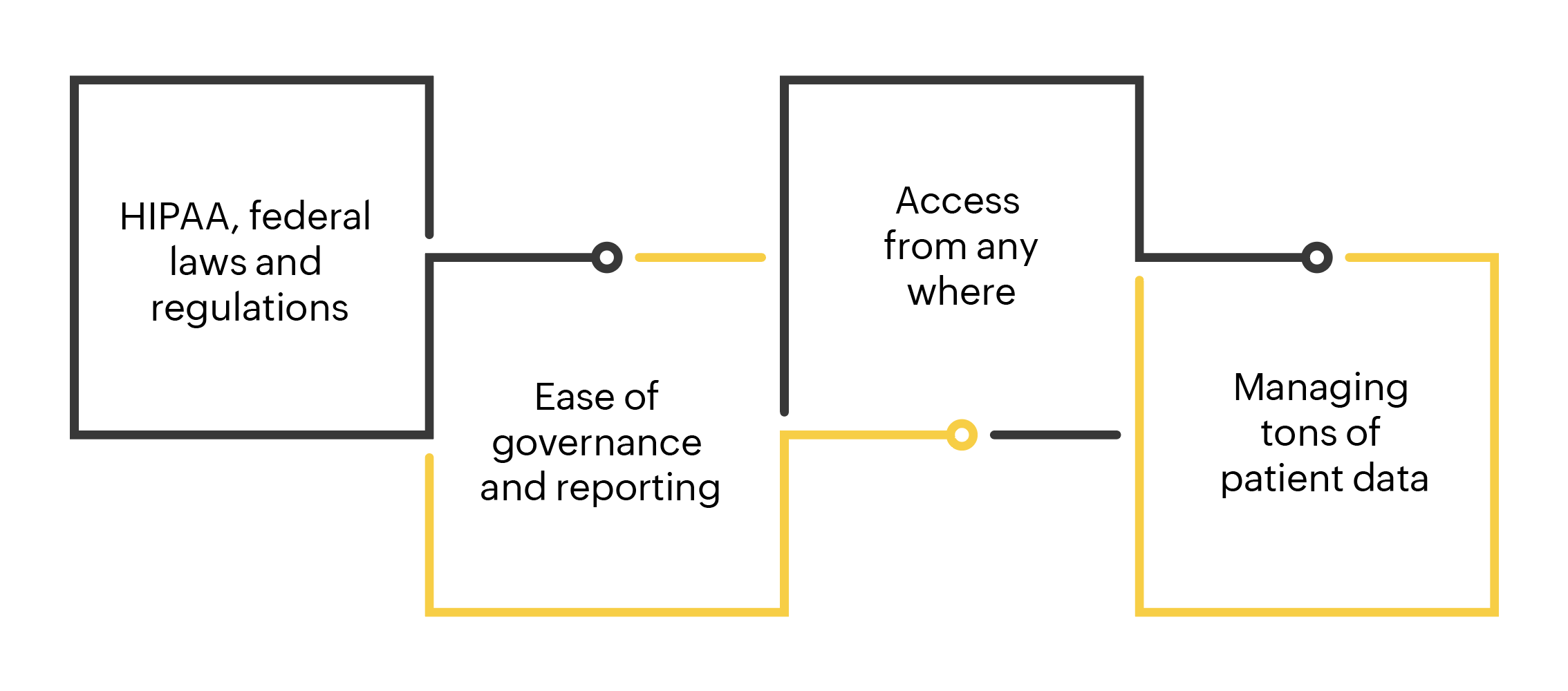Healthcare is one of the fastest growing industries today, thanks to an increased desire for healthy living and the ease of access to excellent medical care. With such an unprecedented surge in demand for medical care, healthcare institutions must seek a strong and robust IT system for efficient management. In fact, today, the IT department is as common as the radiology department in most hospitals. Hospitals rely on IT systems and computer networks to manage the entire patient treatment cycle, from admission to discharge, to the extent that they have come to view the IT department as a value-enhancer, not the “cost center” they were once considered to be.
The flip-side to this overarching reliance on IT is that even the slightest glitch in the IT systems could adversely impact their operations. Add to this federal laws like HIPAA that mandate intense scrutiny of IT system security and patient data integrity, and an IT manager's job becomes all the more challenging.
This white paper puts forth a solution to overcome the various IT challenges and risks that today's healthcare institutions face.
Healthcare institutions come in all sizes, from the basic outpatient-only treatment center down the road to large medical centers in universities and huge community healthcare centers. What they have in common is a strong IT system in place, and even stronger strict federal laws that each institution is governed by; in the case of the large centers, the law is more pronounced, and the fallout of not complying could mean damaging ramifications.
IT spending in healthcare institutions today is like never before, mainly due to the need to manage the health-related information of numerous patients and their medical histories. Also, thanks to information and communication technologies, telemedicine is catching up in a big way, making medical treatment possible from anywhere without the constraints of time and distance.

Healthcare software and systems, popularly termed health information systems (HIS), help to automate all the important processes in a healthcare institution. Some examples of this include:
As can be seen from the number of benefits above, healthcare institutions with an IT system in place stand to gain much more than the upfront spending they incur. Yet, one major caveat here is the extreme reliance on IT systems, which in turn rely on nebulous computer networks.
What this means for healthcare centers is that a single network mishap could render the IT system unusable—and with it goes away the access to patient information and medication instructions.
Also, with the widespread use of electronics for communication and entertainment purposes, hospital networks are always under threat of being abused for purposes that are not within the purview of patient treatment. Such a phenomenon could unnecessarily burden the network, stripping the availability of bandwidth for a much more critical application.
A network disaster could pose a serious risk to the reputation and even the existence of the healthcare institution. This could include:
So attempts to mitigate network risks by having mechanisms ready to combat a network disaster are well in order
Consider the case of a large community medical center that has 5,000 employees and 60 distinct business units. To achieve high levels of service delivery and efficiency, the medical center deploys a sophisticated HIS that spans its entire campus.
Its infrastructure includes:

As the medical center is heavily reliant on IT and computer networks, ensuring remote data access and network connectivity is critical for the smooth functioning of the whole enterprise. The network administrator or CIO has to anticipate the possible problems that may crop up and disrupt the smooth functioning of the healthcare delivery process. Possible challenges include:
Having assessed the potential risks that an enterprise is vulnerable to, it is vital to address them effectively before they can cause problems.
|
The challenge (perceived risk)
|
The solution
( risk mitigation mechanism ) |
|---|---|
| 1. Monitor networks and proactively thwart any possible network failures. | Have good network monitoring software that can inspect your entire network and give meaningful, in-depth reports to help wade through the problems. |
| 2. Monitor network bandwidth usage and ensure high bandwidth availability for critical applications. |
Have a strong WAN monitoring solution that can monitor the entire network's bandwidth and all network traffic. It's also beneficial to get reports on who the top talkers are, what applications are eating up the maximum bandwidth, when the bandwidth peaks, and the bandwidth usage pattern over the last couple of months. More importantly, such information can help decide how to perform capacity planning. |
| 3. Log all access to the HIS system and patient records. | Have a strong log analyzer solution that can capture and store logs with information on all accesses, such as successful or failed attempts to access the HIS. It should also be able to report on the stored logs and provide actionable decisions, and generate reports on HIPAA compliance. |
| 4. Reduce the MTTR, and in case of any event or disaster, have a strong disaster recovery process in place. | Have sound help desk management software that can help assign ownership to individuals in charge of resolving issues and track the progress of the issue for quick resolution. |
ManageEngine NetFlow Analyzer is a tool that harnesses the NetFlow data export from routers and switches to analyze and report on vital parameters, like who the top talkers are, which applications are consuming the maximum bandwidth, and whether there has been any network attack or unscrupulous access attempts. You can also use this tool to drill down to find the origin of a persisting network issue with raw data reports and deep packet inspection.
Armed with this information and with provisions to be proactively alerted about any threshold violations, you can stay proactive and prepared when it comes to your healthcare network.